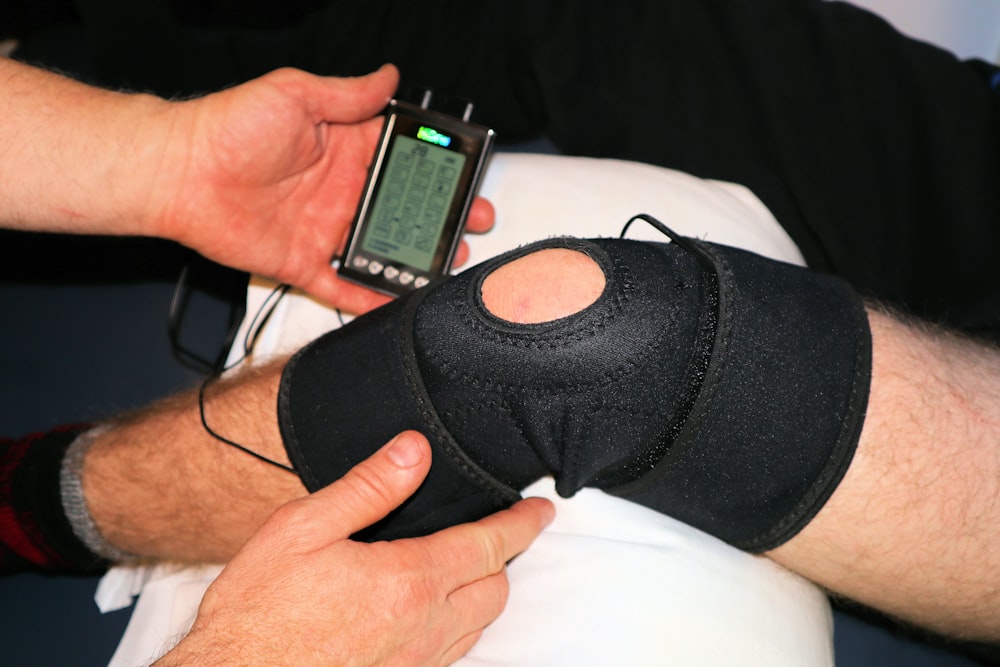目次
やはりPF関節障害に大腿筋膜張筋の過緊張が関連している?
PF関節障害の原因として大腿筋膜張筋や外側広筋といった外側支持機構のtightnessが挙げられます.
大腿筋膜張筋や外側広筋といった外側支持機構のtightnessは膝蓋骨を外方偏位させ,PF関節障害を引き起こすことが知られております.
またこういった外側支持機構の過緊張や硬さに伴う症候をlateral patellofemoral overload syndrome (LPOS)と呼びます.
しかしながら本当に大腿筋膜張筋や外側広筋といった外側支持機構のtightnessがPF関節障害と関連しているのかどうかは不明であります.
今回はボツリヌス毒素(BT)注射を使用して,PF関節障害に大腿筋膜張筋の過緊張が関連しているのか否かを明らかにした研究論文をご紹介させていただきます.

今回ご紹介する論文
Am J Sports Med. 2016 May;44(5):1195-202. doi: 10.1177/0363546516629432. Epub 2016 Feb 22.
The Use of Sonographically Guided Botulinum Toxin Type A (Dysport) Injections Into the Tensor Fasciae Latae for the Treatment of Lateral Patellofemoral Overload Syndrome
Joanna M Stephen 1, David W J Urquhart 2, Richard J van Arkel 3, Simon Ball 4, Matthew K J Jaggard 5, Justin C Lee 4, J S Church 6
Affiliations expand
PMID: 26903213 DOI: 10.1177/0363546516629432
今回ご紹介する論文は2016年に掲載された論文です.
研究の背景
Background: Pain in the anterior and lateral parts of the knee during exercise is a common clinical problem for which current management strategies are often unsuccessful.
運動時の膝関節前方および外側の疼痛は,改善に難渋することの多い問題です.
研究の目的
Purpose: To investigate the effect of an ultrasound-guided botulinum toxin (BT) injection into the tensor fasciae latae (TFL), followed by physical therapy, in patients classified with lateral patellofemoral overload syndrome (LPOS) who failed to respond to conventional treatment.
この研究では従来の治療で効果が得られなかった外側膝蓋大腿過重症症候群(LPOS)に分類される症例に対して,超音波ガイド下での大腿筋膜張筋(TFL)へのボツリヌス毒素(BT)注射とその後の理学療法の効果を検討することを目的としております.
研究デザイン
Study design: Case series; Level of evidence, 4.
研究デザインはケースシリーズでエビデンスレベルが4となっております.
研究の方法
Methods: A total of 45 patients (mean ± SD age, 32.4 ± 8.6 years) who met the inclusion criteria of (1) activity-related anterolateral knee symptoms, (2) symptoms lasting longer than 3 months, (3) a pathological abnormality confirmed by magnetic resonance imaging, and (4) previous failed physical therapy received an ultrasound-guided injection of BT into the TFL followed by physical therapy. Patient-reported outcomes were collected at 5 intervals: before the injection; at 1, 4, and 12 weeks after the injection; and at a mean 5 years after the injection. In 42 patients, relative iliotibial band (ITB) length changes were assessed using the modified Ober test at the first 4 time points. A computational model was run to simulate the effect of TFL weakening on gluteus medius (GMed) activity. Statistical analysis was undertaken using 1-way analysis of variance and paired t tests with Bonferroni post hoc correction.
(1)運動に伴う膝関節前方の症状,(2)3ヵ月以上続く症状,(3)MRIで確認された病理学的異常,(4)過去に理学療法が無効であったといった取込基準を満たした45例の対象者(平均±SD年齢,32.4±8.6歳)に,超音波ガイド下で大腿筋膜張筋にボツリヌス毒素を注入した後に理学療法を行っております.
注入前,注入後1週間,4週間,12週間,そして平均5年後の5つのタイミングで,症例が報告した結果を収集しております.
42例では最初の4つのタイミングで腸脛靭帯(ITB)の相対的な長さの変化を修正Oberテストを用いて評価しております.
計算モデルを用いて大腿筋膜張筋の筋緊張低下が中殿筋の活動に及ぼす影響をシミュレーションしております.
統計解析には一元配置分散分析とBonferroni post hoc correctionを用いたペアt検定を使用しております.
研究の結果
Results: There was a significant improvement in Anterior Knee Pain Scale scores from before the injection (61 ± 15) to 1 (67 ± 15), 4 (70 ± 16), and 12 weeks (76 ± 16) after the injection and in 87% of patients (39/45 patients available for follow-up) at approximately 5 years (from 62.9 ± 15.4 to 87.0 ± 12.5) after the injection (all P < .010). A significant effect on the modified Ober test was identified as a result of the intervention, with an increase in leg drop found at 1 (3° ± 5°), 4 (4° ± 5°), and 12 (7° ± 6°) weeks after the injection compared with before the injection (all P < .010). Simulating a progressive reduction in TFL strength resulted in corresponding increases in GMed activity during gait.
結果ですがAnterior Knee Pain Scaleスコアは,注射前(61±15)から注射後1週間(67±15),4週間(70±16),12週間(76±16)と注射後約5年(62.9±15.4から87.0±12.5)で87%の症例(追跡調査が可能な39/45人)に有意な改善が見られております.
介入の結果,修正Oberテストに有意な効果が認められ,注射前と比較して注射後1週目(3°±5°),4週目(4°±5°),12週目(7°±6°)に改善が認められました.
大腿筋膜張筋硬度の漸減をシミュレートすると,それに対応して歩行中の中殿筋の筋活動が増加しております.
研究の結論
Conclusion: An injection of BT into the TFL, combined with physical therapy, resulted in a significant improvement of symptoms in patients with LPOS, which was maintained at 5-year follow-up. This may result from reduced lateral TFL/ITB tension or to an increase in GMed activity in response to inhibition of the TFL.
大腿筋膜張筋へのボツリヌス毒素の注入と理学療法の併用によって,lateral patellofemoral overload syndrome (LPOS)を合併した症例の症状が有意に改善し,その効果は5年後の追跡調査でも維持されております.
この結果は,大腿筋膜張筋および腸脛靭帯といった外側支持機構の張力の減少,または大腿筋膜張筋の抑制に対応して中殿筋の筋活動が増加したためと考えられます.
今回はボツリヌス毒素(BT)注射を使用して,PF関節障害に大腿筋膜張筋の過緊張が関連しているのか否かを明らかにした研究論文をご紹介させていただきました.
非常に興味深い結果ですね.
この結果から考えてもPF関節障害を有する症例に対しては大腿筋膜張筋をはじめとする外側支持機構のtightnessを改善する方策が有効であることが示唆されますね.






